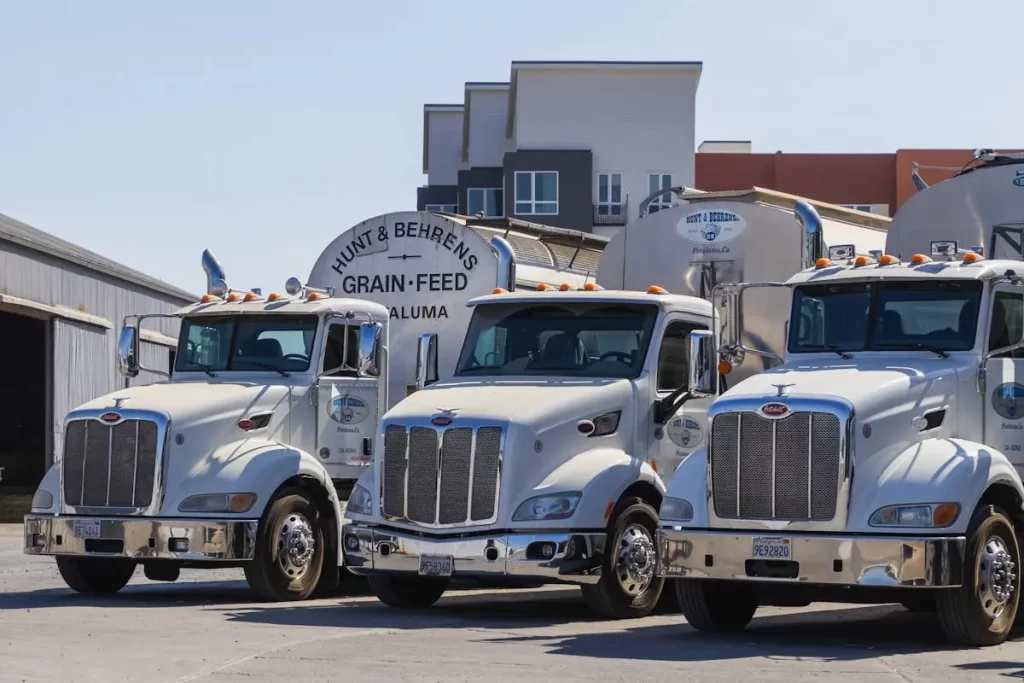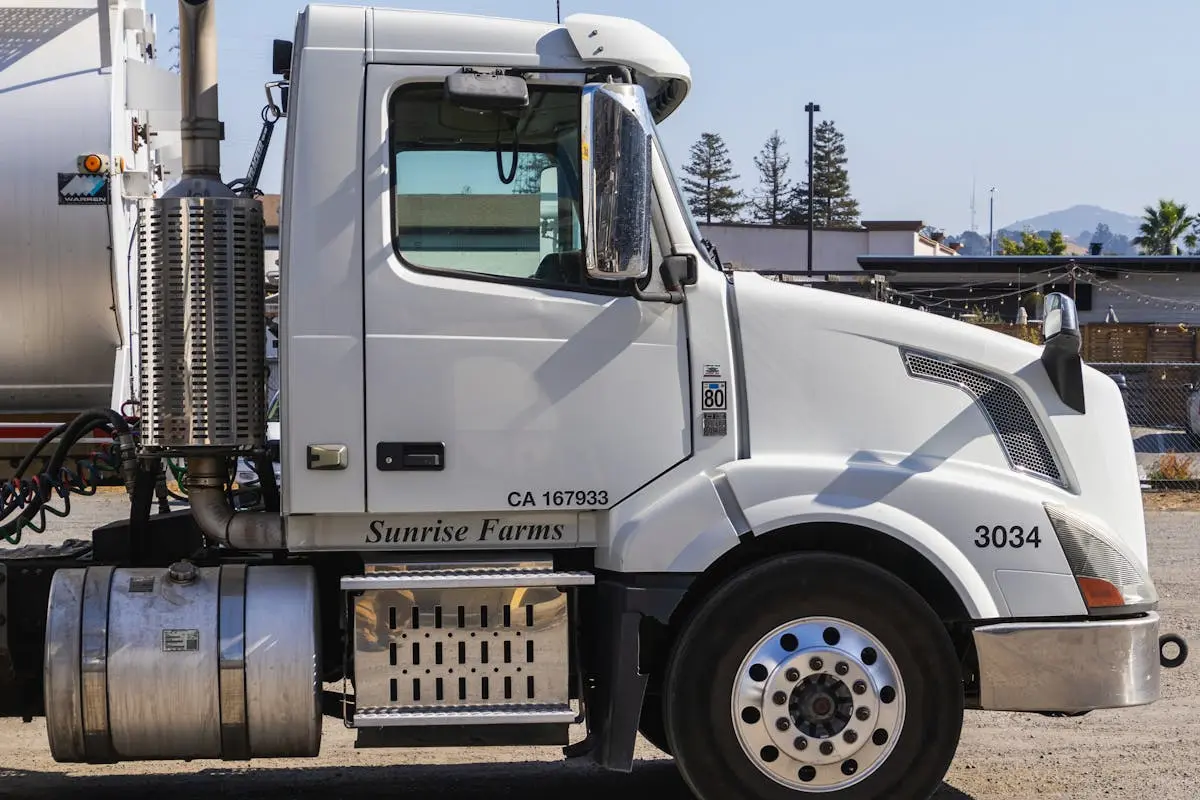Commercial truck leasing can be a smart and cost-effective alternative for businesses that rely on trucks for their operations. However, to truly maximize the benefits of leasing, it takes a strategic approach. This guide offers nine expert tips to help business owners make the most out of their commercial truck leases.
Understanding the Basics of Commercial Truck Leasing
Before diving into the tips, it’s essential to grasp the basic principles of commercial truck leasing. This approach involves renting a truck for a fixed period, providing companies with flexibility and reduced upfront costs compared to purchasing. The main advantage is the ability to allocate resources elsewhere, such as in expansion or technology upgrades, which can be crucial for burgeoning businesses. Additionally, leasing can offer a degree of flexibility in upgrading your fleet as company needs evolve, ensuring your operations remain at the cutting edge of efficiency.
While leasing may not grant ownership, it alleviates the financial burden of vehicle depreciation. Companies can focus on core business activities without the headache of reselling older equipment. Moreover, the variety in lease structures, from full-service leases that cover maintenance to basic leases which only cover the rental, allows businesses to tailor their leasing approach to meet specific operational and financial strategies.
Assessing Your Fleet Needs and Specifications
Careful assessment of your business’s fleet needs is pivotal in choosing the optimal leasing option. To do so, begin by analyzing your logistics and operational demands. What types of goods will you transport? How do the specifications of your trucks align with these needs? For instance, businesses dealing with perishable goods may require refrigerated trucks, whereas those transporting heavy machinery might need vehicles with enhanced load capacities.
Another critical factor is understanding the routes your fleet will undertake. Urban environments may necessitate nimble, fuel-efficient vehicles to navigate through traffic efficiently, while rural or construction settings might demand robust, off-road-capable models. Furthermore, it’s beneficial to forecast future business directions—will your transportation methods change with expected growth? This strategic foresight ensures that your fleet remains adaptable and continues to meet the evolving demands of your business.
Choosing the Right Leasing Provider
Selecting the right leasing provider involves more than just comparing prices. Reputable providers offer not only competitive pricing but also flexible leasing terms and robust customer service. Conduct thorough research, engage in consultations, and seek recommendations from industry peers. It’s important to evaluate the provider’s reputation and performance metrics, ensuring they align with your operational priorities.
A well-chosen provider can serve as a valuable partner, offering insights into optimizing fleet operations and reducing costs. Look for providers who are responsive to queries and flexible enough to accommodate bespoke contract adjustments as your business situation changes. Being able to rely on a provider’s post-lease support, from prompt maintenance assistance to seamless transition into new leases, is essential for maintaining smooth business operations.
Additionally, transparency in the leasing process should be non-negotiable. Providers who maintain open communication and are upfront about their terms instill confidence and eliminate any potential for misunderstandings later on. The ultimate goal is to secure a partnership where both parties benefit and grow together.
Negotiating Favorable Lease Agreements
Successful negotiation of lease agreements hinges on understanding your business’s requirements and matching them with what the lease provider can offer. Key elements such as mileage caps, maintenance duties, and penalties for early contract terminations should be negotiated to align with your business’s operational and financial objectives. Companies should aim to strike a balance where their operational needs do not lead to unforeseen financial burdens.
Transparency is pivotal in these discussions, as it fosters an environment where both parties can work toward a mutually beneficial agreement. Payment structures, such as escalating payment plans or seasonal adjustments, can offer financial relief during slower business periods. Additionally, negotiating options to purchase the vehicle at the lease’s end might offer advantages if long-term retention is anticipated. Collaborating with financial advisors during negotiations can yield insights into tax implications and optimize the financial outlays connected with the lease terms.
Taking Advantage of Tax Benefits
Leasing commercial trucks can offer significant tax benefits, which can bolster your financial planning. Leasing payments often qualify as operating expenses, potentially reducing taxable income. Additionally, lease arrangements can offer more favorable amortization schedules compared to outright purchases, improving cash flow management significantly.
Understanding the nuances of tax regulations is essential to capitalize fully on these benefits. Engaging a tax professional with expertise in transportation and logistics can ensure that you’re optimizing every aspect of leasing-related expenses. They can also provide guidance on how leasing might impact your overall tax strategy, potentially opening up opportunities for reinvestment into your fleet or other business sectors.
Prioritizing Maintenance and Repairs
A comprehensive maintenance plan is a linchpin in managing a leased fleet efficiently. With maintenance often covered under the lease agreements, businesses can maintain high operational standards without unexpected expenses. This encompasses scheduled services, which prevent vehicle downtimes, and addresses potential mechanical failures before they impact daily operations.
The strategic advantage of incorporating maintenance within your lease agreement means that operational efficiency is maintained at all times. Ideally, a full-service lease covers all major aspects of vehicle upkeep, including tire replacements, brake checks, and engine diagnostics. Regular maintenance not only extends the lifespan of the vehicles but also ensures compliance with safety regulations, thereby safeguarding your workforce.
Evaluating Residual Value and Buyout Options
Evaluating the residual value of leased vehicles is a tactical consideration that can dictate long-term leasing strategy. The residual value reflects the expected depreciation of the vehicle over the lease term. Lower residual values might offer opportunities for buying the truck at the end of the lease term, should ownership align with business goals.
Considering buyout options is crucial, especially if the vehicle has been integral to your operations. If it offers continued utility and fits within future business models, purchasing it could prove more economical than initiating a new leasing cycle. Understanding the intricacies of the lease-to-own terms and having an eye for emerging technologies could heavily influence a business decision regarding a buyout or renewal.
Monitoring Mileage and Usage Restrictions
Adhering to mileage and usage restrictions is crucial to avoid penalties that could inflate leasing costs unexpectedly. Lease agreements frequently include usage limits that can significantly impact the financial outcome of a lease. Regularly tracking vehicle mileage with accurate systems can prevent unnecessary charges at the contract’s conclusion.
Educating drivers about these limits and implementing monitoring technologies can ensure compliance. Penalty costs for exceeding mileage caps can often be substantial, diminishing the financial advantage that leasing provides. Efficient record-keeping and constant communication with your leasing provider can help you manage this aspect effectively, aligning operational practices with contractual obligations.
Planning for Fleet Expansion and Renewal
Planning fleet expansion is a dynamic process that benefits greatly from strategic lease planning. Aligning the expiry dates of leases with growth phases can smooth transitions and sustain cash flow stability. Forward-thinking strategies that anticipate market and operational growth provide an advantage in negotiating favorable renewal or expansion terms.
Strategic renewal ensures your fleet remains current with technological advancements and safety improvements. Reviewing past lease experiences can highlight opportunities for better terms. It’s equally important to keep abreast of market trends, assessing how industry developments might influence the specifications and rates of your next fleet expansion endeavor.
Leveraging Leasing for Long-Term Success
Commercial truck leasing presents numerous advantages for businesses looking to enhance their fleets efficiently. By following these expert tips, companies can enjoy not just financial savings but also improved operational flexibility, vehicle quality, and long-term strategic benefits.



